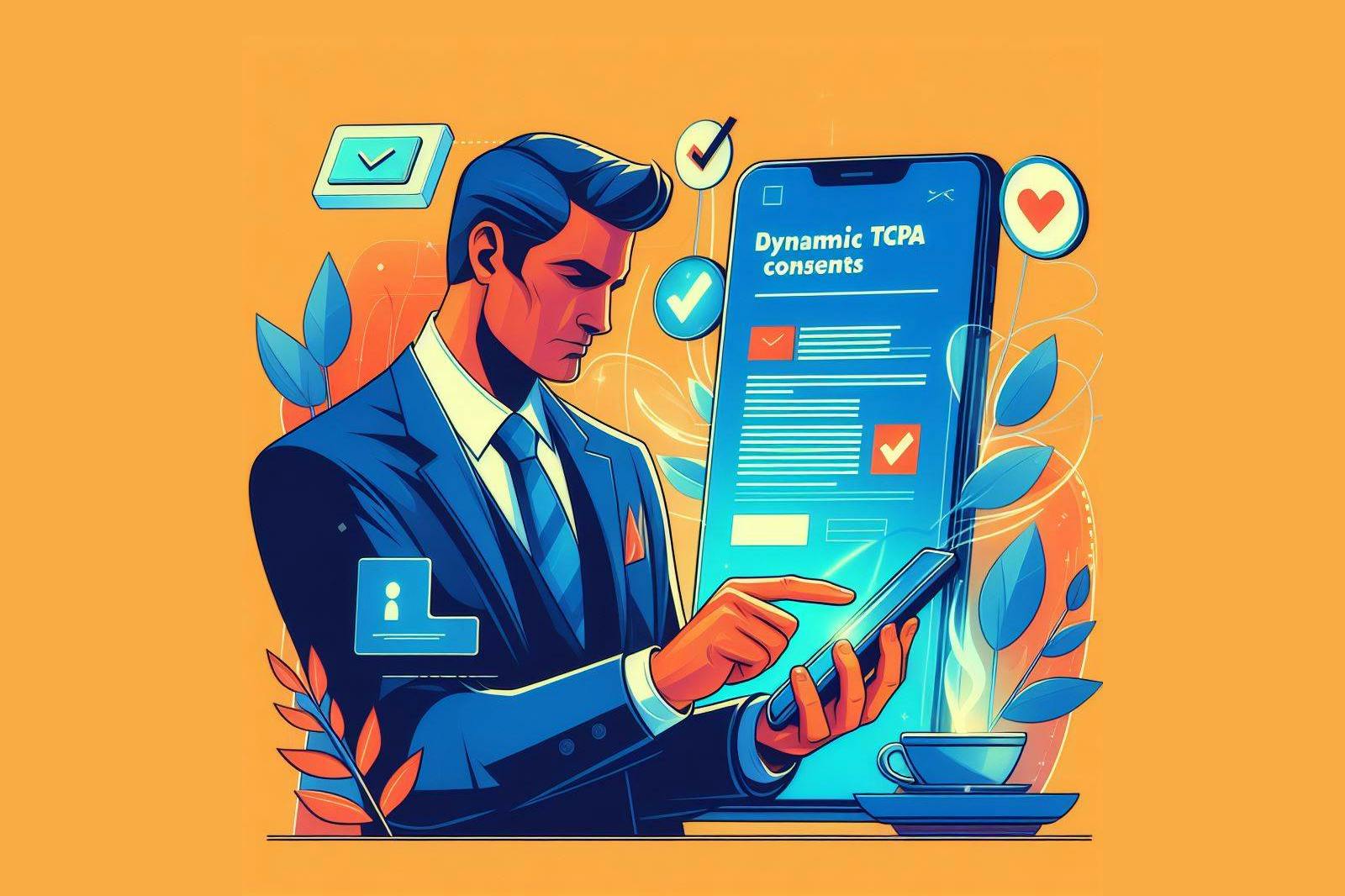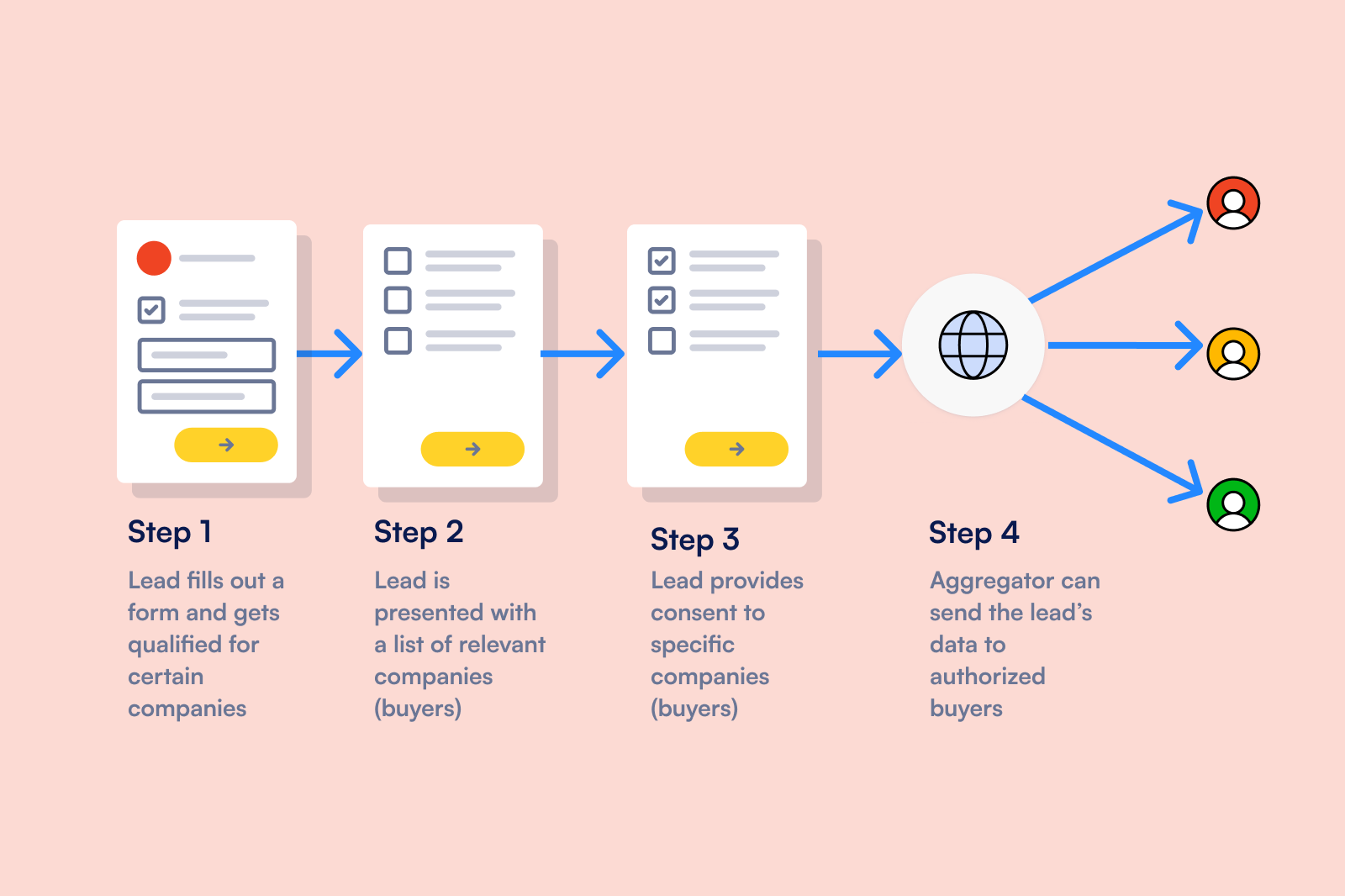Dynamic TCPA consents - lead generation forms

Get ahead of the curve with TCPA-compliant lead forms
Businesses relying on the exchange of consumer data to generate leads are now facing significant restrictions. Recent changes to the Telephone Consumer Protection Act (TCPA) impact lead generation across all industries. Companies have to reevaluate and update their lead generation strategies to ensure their practices comply with the revised TCPA guidelines.
The TCPA of 1991 safeguards consumers against unsolicited communications. The Federal Communication Commission’s (FCC) December 2023 update to the TCPA aims to strengthen consumer protections and enhance transparency in communication. Previously, ambiguities in consent language had left consumers exposed to an influx of unwanted communications. The new regulations are designed to close this “lead generator loophole."
Understanding these updates is an essential step in successfully navigating and adapting to the evolving regulatory environment, ensuring your lead generation efforts remain both effective and compliant. In this article, we’ll explain the change and show how you can create lead generation forms that are compliant and responsive to consumer preferences.
The lead aggregator challenge
Lead aggregators are companies that specialize in collecting and selling leads to multiple partners across various industries. These intermediaries streamline the lead acquisition process, benefiting both businesses and consumers. By consolidating leads from various channels, including online forms, surveys and partnerships, lead aggregators create a streamlined avenue for businesses to connect with potential customers. Outsourcing lead acquisition and qualification lets businesses focus on their core competencies. They can leverage these aggregators' expertise to efficiently compile a pool of leads.
Lead aggregators face a challenge in balancing effective lead generation with compliance with evolving regulations such as the TCPA. This challenge involves several key aspects:
- Compliance with TCPA regulations: This includes obtaining proper consent for communications and providing transparency about who will contact the consumer.
- Maintaining lead quality: This means ensuring that the leads are relevant, interested, and have genuine potential to convert into customers for the businesses they are sold to.
- Balancing the interests of businesses and consumers: For businesses, they need to provide valuable, actionable leads. For consumers, they must ensure a respectful and transparent process that doesn't lead to unwanted communications or privacy infringements.
- Building trust: This involves clear communication, and respecting consumer preferences.
- Technological and operational adaptation: Implementing systems that efficiently manage and track consents, while also being adaptable to changes in laws and consumer preferences often requires sophisticated technology and operational flexibility.
- Market competition and reputation management: Lead aggregators operate in a competitive market and must constantly innovate to stay ahead while managing their reputation.
The introduction of dynamic TCPA consents has brought a new dimension to this process. This change, while challenging, offers an opportunity for lead aggregators to enhance their practices towards greater transparency and lead quality.
By adapting to these changes and prioritizing clear consent practices, lead aggregators can strengthen their role as valuable facilitators in the marketplace, aligning their operations with evolving regulatory and consumer expectations.
The TCPA rule change
The heart of the December 2023 TCPA update lies in the redefinition of consent language. Consent must now be explicit and transparent. The language used in obtaining consent must be clear, leaving no room for ambiguity. This shift aims to empower consumers with a better understanding of how and why their information is being used.
The industry is swiftly adapting to the latest regulatory changes, and lead aggregators are at the forefront of this transformation. Recognizing that enhanced communication practices will better serve businesses and consumers alike, lead aggregators are embracing the paradigm shift.
This proactive approach underscores a commitment to ensuring that communication practices not only meet regulatory requirements but also elevate the overall experience for businesses and consumers. By honing their communication strategies, lead aggregators are setting a new standard for industry practices, one that prioritizes transparency, efficiency, and a heightened level of engagement.

Lead generation forms
The new TCPA regulations present an opportunity for lead aggregators to enhance their operational excellence. By adopting online lead generation forms, for instance, they can gather valuable data and qualify leads before soliciting consent while ensuring compliance with the updated policies by explicitly communicating consent and entity selection.
It’s important to note here that if you’re in the healthcare industry, you’ll also need to ensure your lead generation process is HIPAA-compliant. Learn more about the essential patient data security measures healthcare lead generation forms must adhere to here.
Step-by-step guide - how to create effective lead gen forms with Formsort
Step 1. Define your target audience
Begin by clearly defining your target audience. Understand their demographics, preferences, and specific characteristics that make them valuable leads. This will inform your form’s tone, word choice, layout and graphics. Making your form design mobile responsive will help you reach leads on the go. Developing a comprehensive understanding of your target audience will help ensure your lead generation form aligns with the interests and needs of your ideal prospects.
Step 2. Build a form
Start the form creation process on Formsort by signing up for a Formsort account following the registration process. Click + New flow and select Start blank. Select a theme that’s closest to your brand aesthetics. You’ll be able to customize the design later.
Step 3. Ask questions to qualify leads
Craft questions to qualify leads effectively–not all leads are ideal customers for your industry or for your buyers so identifying the best potential leads is essential for a streamlined lead generation process. Use Formsort's question-building features to add fields collecting the data you’ll need to segment automatically qualify/disqualify, and gain insights into prospective leads. Select from a range of question types such as multiple choice, true/false, multi-select, and text input. Use conditional logic to personalize the customer journey and features like dropdowns and autofill to expedite the form-filling experience.
Step 4. Dynamically display list of buyers and get consent from leads
Securing the lead's consent to share their data with buyer companies is a crucial step. Depending on the quantity of buyer companies in your database, you can use different form solutions to offer your leads the most appropriate choices:
Conditional logic for preset lists: This is a practical choice if you have one defined list of buyer companies that you want to display if a lead is qualified. They can select the specific buyer with which they want to share their information. Disqualified leads can be directed to a different page in the form.
Calculated variables for dynamic list options: If you have a longer list of buyer companies and want to display options based on responders’ preferences, calculated variables is the efficient and streamlined way to go. The form will calculate the best-fit buyers using your pre-defined rules and present the names dynamically in confirm boxes.
API function for real-time results: Your buyer list might be changing all the time based on the market. If you have a large database containing a fluctuating list, consider using the API function to match leads to the most current list of matching buyers. Set up the API variable and fetch the latest information without requiring constant manual updates or overloading the form.
Formsort seamlessly incorporates all of these features to optimize efficiency, user experience, and system functionality. Create dynamic TCPA consent forms with the best solution for your data. Plus, when you tie consent checkboxes directly to specific entities, you’re ensuring compliance and effectiveness in your lead generation forms.
Step 5. Experiment and analyze for optimization
Experiment with different form variations, layouts, and interactive elements to find the most effective combination. A/B testing, tweaking form fields, and analyzing conversion rates are all part of the iterative process. Through experimentation, you’ll gain valuable insights into user preferences and behaviors, allowing you to optimize your form.
Jornaya and TrustedForm are tools that can produce a verification proving that a responder actually filled out your form. It’s helpful if you are redirecting your responders to affiliate sites and need to provide proof that a real person actually filled out the form flow. Formsort has integrated with both tools so you can leverage them for your process.
Conclusion
Lead aggregators have a unique opportunity to optimize business practices while enhancing compliance measures according to the new TCPA policies. By creating highly effective lead generation forms, you can generate quality leads and foster robust relationships based on transparency and trust.